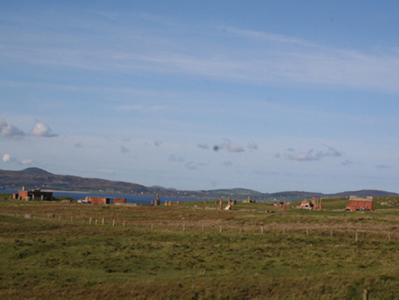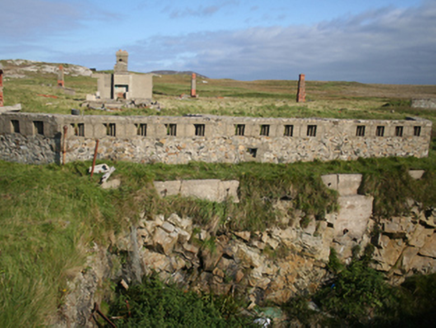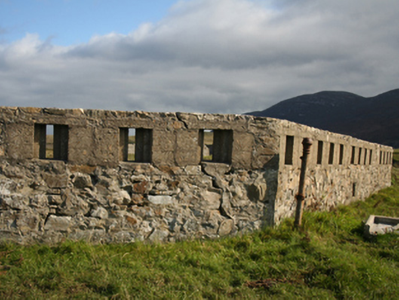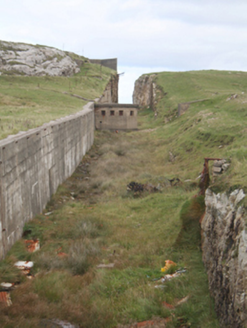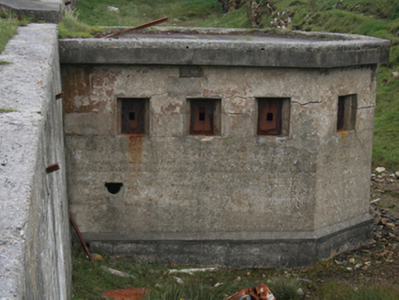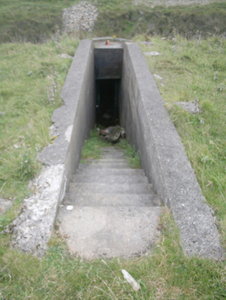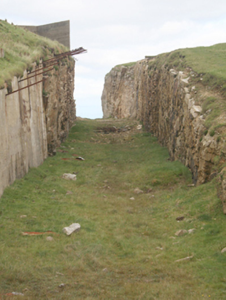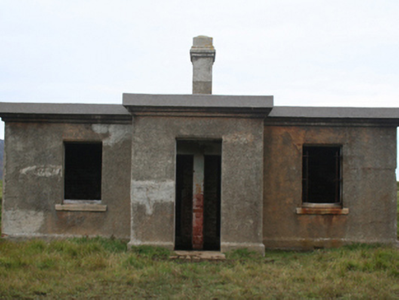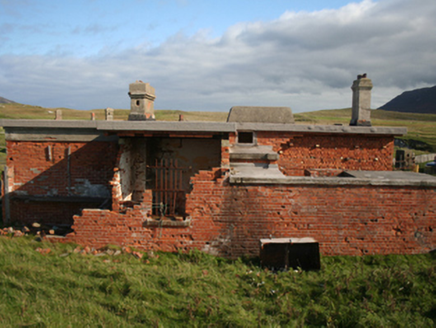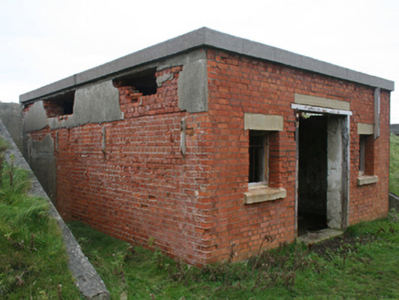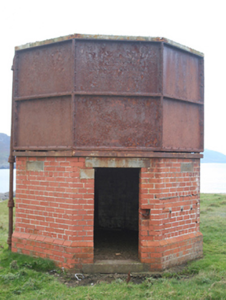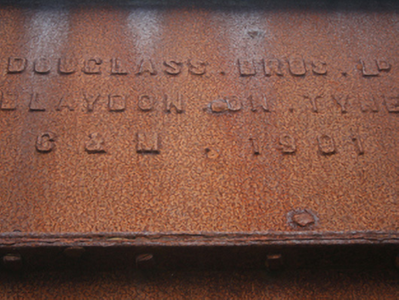Survey Data
Reg No
40900914
Rating
Regional
Categories of Special Interest
Architectural, Historical, Technical
Previous Name
Lenan Coastal Battery
Original Use
Battery
Date
1900 - 1905
Coordinates
229917, 444511
Date Recorded
24/09/2008
Date Updated
--/--/--
Description
British Army former coastal defence battery, built 1902, with barracks, associated structures and surrounding fortifications, located on small peninsula. Three concrete gun positions (40900913) on a cliff edge facing north and covering Lough Swilly with underground magazines, stores and shelters, linked by sunken roads with battery commander’s post and position finding cells upslope to the north and barrack accommodation, water tower, guard house and surrounding fortifications to the south. Multiple three and six-bay single-storey barracks variously with returns, toilet blocks and sheds to rear, and projecting bays incorporating porches to front left and right elevations or projecting porches to front centre elevations, situated in a linear arrangement to south-west of site. Flat tarred reinforced concrete roofs, concrete cornicing, rendered red brick chimneystacks with clay pots, remnant cast-iron rainwater goods, remnant paint over rendered and roughcast red brick walls, projecting plinths, square-headed window openings with concrete sills, square-headed door openings. Multiple partially demolished structures in linear arrangements to south-west and centre of site. Concrete foundations with red brick chimneystacks comprising remnant of corrugated-metal accommodation huts, built c. 1914. Five-bay single-storey barracks with three-bay projection incorporating porch to front left, return to rear, toilet block and shed extensions with walled yard to rear, situated to south-west of site adjacent entrance. Flat tarred reinforced concrete roof, concrete water tank, rendered red brick chimneystacks with clay pots, remnant cast-iron rainwater goods, red brick walls, square-headed window openings, sandstone ashlar lintels over concrete sills, timber-framed windows, cast-iron bars to window in rear elevation, square-headed door openings with sandstone ashlar lintels. Single-bay two-storey to centre of site. Pitched corrugated roof, red brick walls and flat-roofed projecting porch, single window to first floor front elevation. Three-bay single-storey guardhouse to west of site. Flat tarred reinforced concrete roof, red brick walls, square-headed window openings, sandstone ashlar lintels over concrete sills, timber-framed windows with cast-iron bars, square-headed door opening with sandstone ashlar lintel. Cut into hillside with concrete retaining wall to rear and sides. Water-tower to centre of site. Octagonal cast-iron water tank with cast-iron pipes on octagonal red brick base with projecting plinth, square-headed door opening to west with concrete lintel. Founders stamp reads ‘DOUGLASS BROS LD, BLAYDON ON TYNE, C & M 1901’. Across the base of the peninsula is a rock-cut ditch originally 7.7m wide and 4.6m deep with concrete scarp running east-west and turning south-north. Half-way along its length it projects south and away from the main accommodation area forming a D-shaped salient. Entrance was originally via drawbridge to the south replaced by a concrete bridge with loopholed wall providing defence. Three concrete blockhouses, built 1916, to defend the ditch, backed by shallow trenches to rear. Two are four-sided and one is pentagonal, approached via short covered way leading down steps into blockhouse rear, rifle loopholes protected by iron shutters. Concrete fire trench built into higher ground near the cliff edge overlooking north-eastern section of the ditch.
Appraisal
Lough Swilly was one of the three “Treaty Ports” retained by Britain after the Treaty in 1921. The site is of historic importance, shedding light on the strategic value of Lough Swilly and provides an insight into the defensive thinking of military planners and the skills of military engineers. The site was returned to Irish control in 1938 and manned by 6th Coastal Battery, Artillery Corps. 120 men were garrisoned there during the Second World War. In 1946 the fort was placed in care and maintenance with only a caretaker present and finally abandoned in 1952.

